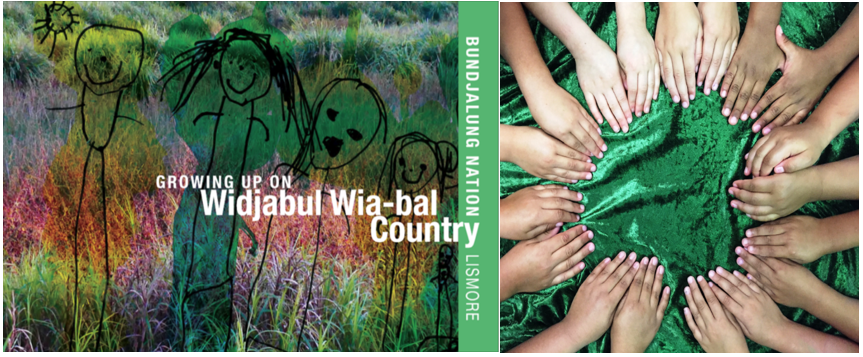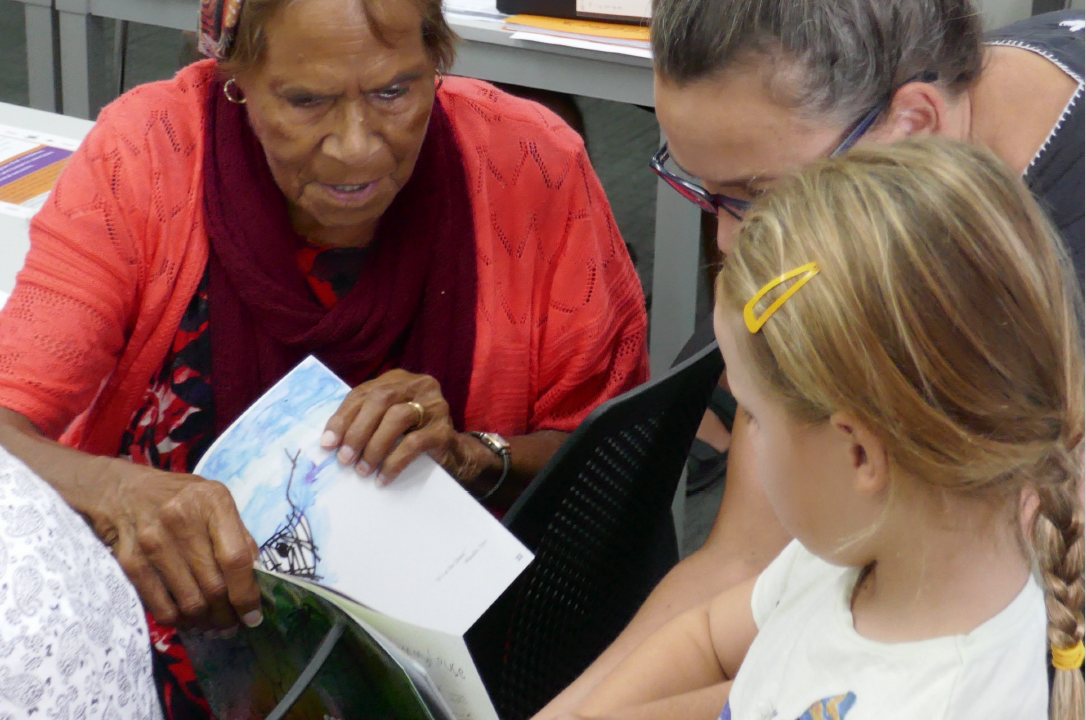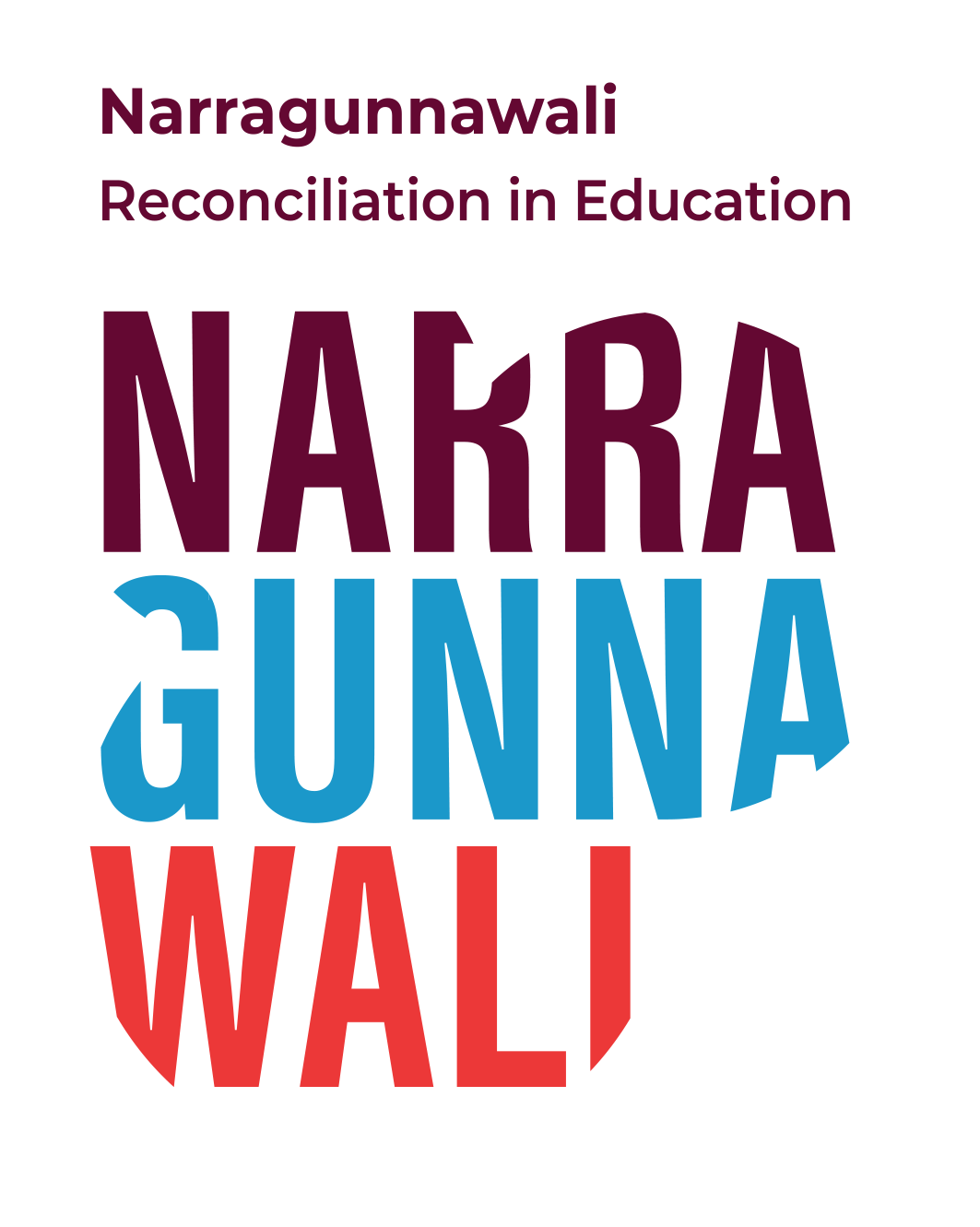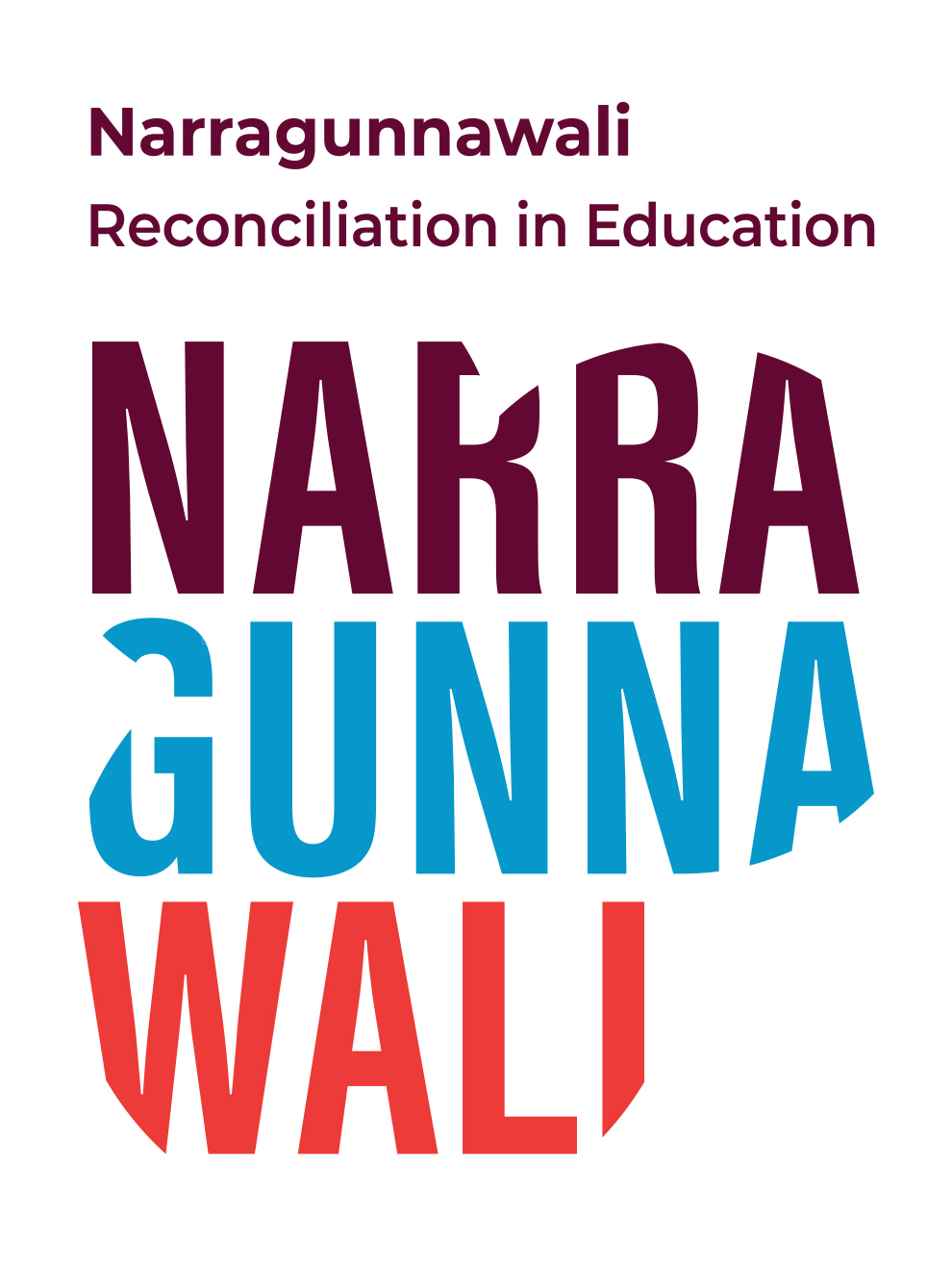Spotlight On – Growing up on Widjabul Wia-bal Country, Bundjalung Nation, Lismore, NSW

Recently, the Narragunnawali team had the privilege of taking part in an Early Childhood Australia Far North Coast Conference in Kingscliff, NSW, where we learned about a children-centred research project that embodied many of the things that we hope to see in reconciliation projects in education. In 2018, through YWCA Australia’s Communities for Children program, the project developed as a partnership between the Bundjalung Elders Council, Southern Cross University, seven early childhood education centres, local artists and other Aboriginal and non-Aboriginal community members. Working together with jarjums (Bundjalung word for children) aged 3-5 years, the team began a research project to “investigate how we come to know the place where we live, learn and play and how that shapes who we become”. This resulted in a 44-page book, Growing up on Widjabul Wia-bal Country, Bundjalung Nation, Lismore, authored by the jarjums themselves.
To learn more about the project we got to chat with Aunty Thelma James (member of the Bundjalung Elders Council), Shauna McIntyre (Project Co-ordinator for YWCA Australia’s Communities for Children Program) , Mim O’Grady (specialist in early childhood intervention and early childhood teacher at Co-ordinator of Ngulliboo Muggi (All of us Strong) Transition to School Program), and Lynette Funnell (Educational Leader at Lismore Preschool).
Zoe: The 'Growing up on Widjabul Wia-bal Country, Bundjalung Nation, Lismore’ project is a really great demonstration of building positive and strong relationships with your local community. Can you tell us about how the project got started, and about some of the processes you undertook?
Shauna: We proposed a collaborative, year-long, early childhood educational and cultural project where young children and jarjums could make their own meanings of growing up in Lismore, on Widjabul Wia-bal Country of the Bundjalung Nation, joining together those parts of place and identity which have too often been kept separate in Australia’s educational practices. We were working towards exploring and transforming it for young children, and equally importantly, for ourselves as educators. This was new territory for all of us, with educators having to co-design the project in relationship with this place and with others, informed by Elders and Country, rather than following a model that already existed, which meant we were all learners together.
The project started with listening and learning, and seeking support and endorsement from the local Aboriginal leaders, Elders, Knowledge-Keepers and community members. Within the organisation, consultation began with the YWCA’s Communities for Children’s Advisory Committee, particularly Widjabul Wia-bal leader, Diane Harrington, who gave her support, as well as critical advice. The Bundjalung Elders Council were the critical point of consultation, who also responded positively, endorsing the project, as well as appointing a Consultant Elder, Aunty Thelma James. A Memorandum of Understanding was drafted between the two organisations to set out a respectful partnership, and consultation meetings between myself and Aunty Thelma occurred on a regular basis throughout the life of the project.
After an expression of interest process, the early learning services were chosen to take part in the project and the consultation. All those who were involved with the project undertook extensive cultural professional development throughout the duration. These rich learning experiences gave us much to reflect upon and discuss together, which lead to the creation of our research question for jarjums and children to explore as curious ‘researchers’, alongside educators: “How do we come to know the place where we live, learn and play and how does that shape who we are becoming?” Each Centre took the question back to their own context, and shaped experiences which uniquely reflected their Centre’s jarjums, children and families, the educators’ strengths, and their own environment.
Mim: It started with the EOI – I didn’t really know what I was signing up for but I was interested because it was a chance to learn, share and find out more about culture which I thought would help our jarjums. I loved how it unfolded with all the participants learning from Elders and Knowledge Keepers so that we could share with the jarjums. I valued too that we also developed the research question together … we weren’t told what to do, rather we shared our knowledge, understanding, needs and came up with a direction that meant something to us all. As a result, we were all strongly wedded to the project and how it could look in each of our unique settings.

Zoe: What made you or the people you were working with choose a book?
Aunty Thelma: A book was tangible, it was a tangible outcome of the learning that the jarjums and children had done, which can be shared with other children, their families and the wider community. It is important recognition for the community – identity and culture and what it’s about. It can be used widely in preschools, in schools and then more broadly in the wider community, where even adults can learn from the children. The book put down all the learning and then it could be shared more widely in the community.
Zoe: How has the wider community responded to the book and the project?
Aunty Thelma: Really positively. There has been an overwhelming positive response from the community. The project has been so positive not only for the jarjums and children but for the wider community. For the little ones they have been able to focus better and settle, listening to Country and being connected to it, meeting the Elders and learning from them.
Shauna: Firstly, it is rare to have a book authored by such young children and jarjums themselves, and then, for adults to learn from such a book about the Country on which Lismore ‘rests’ - Widjabul Wia-bal Country of the Bundjalung Nation - through the words, creativity and imagination of jarjums and young children, who have learned directly from Elders, Knowledge-Keepers and Country- well it’s powerful. Interest has spanned beyond the borders of our community, and communities and organisations from other areas have demonstrated interest in the work of jarjums, young children, their educators and Elders. At the launch, the Mayor made a public commitment to, and thoughtful gesture towards, sharing the book as a gift with all future families with young children who become citizens of Lismore, at Citizenship Ceremonies. This speaks loudly about the value given to the book by the community’s other ‘leader’, Mayor Cr. Isaac Smith.
Lynette: It has been really gratifying to see the response to the book, a response that appears to be continuing to build and grow! As a large service, we tried really hard to involve as many children as possible in the project as it developed, something that was challenging at times in “hearing all the voices,” but allowed for some rich connections with other program inclusions already in place at the preschool including our fortnightly visits to Lismore Art Gallery, our Annual Art Exhibition which sees the entire preschool curated and the Aboriginal artists and Elders with whom we already have a relationship with. I think this book has certainly raised the image and capacities of children to be genuinely ‘seen’ in our community.
Zoe: If you were to give advice to schools and early learning services across the country about building relationships with their respective local communities, what advice would that be?
Aunty Thelma: Too many people come asking about programs and want information, they want input, and that’s the last you hear of them – there’s no outcome. Here was an outcome, in the form of a book, and it was followed through. You need to follow through.
Everyone was included – inclusiveness is important. Elders were included as well as other community members with special skills – artists, respected leaders, Knowledge Keepers. Inclusiveness is very important. It has opened a lot of doors up and now many centres have developed relationships with the Aboriginal community, the Elders and Country. It was not an extra add-on to the workload. It enhanced the work already going on in centres and embedded it, with good results. It enhanced the teachers’ style and gave them more knowledge about what they could do with children.
Shauna: In terms of building relationships, seeking out Elders is critical and then giving time to listen and build relationships slowly is important. Listening, listening and more listening, as well as taking the time it needs to build respectful relationships, which probably means, slowing down, going slowly, taking time, and not rushing or imposing a timeframe on the respectful work of developing relationships of trust. I would also suggest not having a program worked out in advance, but in relationship to what you learn through listening and being in relationship with Elders and Country, to invite the participation of Elders and interested community members in the co-design of a project, which values respect and values the local place. Finally, listening to Elders, and taking time with their guidance, to develop a relationship with Country, one that is a different one from what we may have learned at school, which means unlearning what has maybe been experienced as secure knowledge, and being open to learning in new and different ways - more like children do, using all their senses, emotions and intelligence and relationships ... in a joined-up way, rather than separately. And honouring, therefore traditional ecological knowledge that Aboriginal people have known since time began.
Lynette: Be okay with taking time, lots of time, to look for ways to connect and build shared respect and understandings with your local knowledge holders and community. Recognise that the histories of many local community people, particularly Elders, are deeply rooted in events that have had a significant impact on how they wish or can share their language, their history, the culture, their ways of knowing and being. Be sensitive to all your relationships, position yourselves as the learner and be open to being uncomfortable, to listening and really thinking thoughtfully about what you hear.
Mim: That it takes time to develop trust, understanding and relationships. That you have to come from a place where you cannot hold onto your agenda, being flexible if you want everyone to feel a part of it and have joint ownership and commitment.
Zoe: If others were interested in following your footsteps, where and how should they start?
Shauna: I would suggest becoming aware and following, as much as possible, local protocols within your communities for consulting with appropriate Aboriginal organisations or groups – for example, the Elders Council, Land Council, Aboriginal Education Consultative Group, Aboriginal people – if possible, as many relevant people to your project as you can, to listen, seek participation, endorsement and input into design, so that the project is inclusive, collaborative and respectful. Ensure you have a budget for paying Elders, Knowledge Keepers and other volunteer members of the community, and always ask questions, seek guidance, maintain close relationships and report back for accountability to Elders and Country.
Lynette: Have a really good think about where you are now with the children, families, community and each other in your work – at the very beginning of your journey. What do you want to achieve, or make a difference to, or challenge or find out more about? Think about your partnerships you already have or are working on – who can bring what? Think about what you do well, and where you can do better. Be okay with feeling a bit lost or awkward in developing or being involved in a shared “project” or learning with others – it’s most definitely about the journey and I know that might sound like a bit of a cliché but it’s absolutely true in this case!
A big thank you to Aunty Thelma, Lynette, Shauna and Mim for taking the time to answer our questions. It was so wonderful learning about how respectful mutual relationships and truth-telling from all sides, can lead to great opportunities for an entire community.
This project was sponsored by and made possible with the support of YWCA Australia’s Communities for Children Program, Southern Cross University, Lismore City Council and in partnership Bundjalung Elders Council and 7 Early Childhood Education Centres: Clunes Preschool, Jarjums Centre, Lismore Preschool, Friends Childcare Centre, Goonellabah Goodstart, Possums Early Education Centre and Ngulliboo Muggi (All of Us Strong) Transition to School Program.
-
18 Apr 2024NATIONAL RECONCILIATION WEEK 2024 CURRICULUM RESOURCES
-
18 Apr 2024Teacher Feature – Sherri Bryers, Tasmania
-
18 Apr 2024Civil Discourse: Post-Referendum for schools

